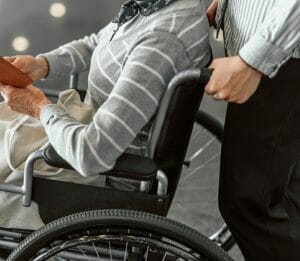Anytime you travel, anxiety and stress follow. Will I have a migraine attack? Will I have the meds I need to treat my attack? What else should I pack in my carry-on? What’s my migraine travel plan?
Update Your Migraine Action Plan
Updating your Migraine Action Plan for travel will decrease your anxiety and help you pack the necessary medications and supplies. Schedule an appointment with your headache specialist to discuss adapting your Migraine Action Plan into a migraine travel plan.
The plan typically begins 1-2 days before your trip, continues throughout your trip, and lasts 1 – 2 days after you return home, sometimes even longer, depending on the amount of recovery time you require. Your plan should include preventive treatments and strategies for managing an attack. This includes which medications to use and when to reduce and stop migraine symptoms. It’s essential to have a Migraine Action Plan while you’re away, because travel, especially by plane, can trigger or worsen migraine attacks. Ensure that you have all your medications with you in your carry-on bag if you are flying. This applies not only in the event of a plane attack, but also in cases of flight delays or lost luggage.

Traveling With Disabilities And Medical Conditions
When it comes to traveling with disabilities and medical conditions, you can start by getting a TSA notification card (TSA.gov) or other medical documentation to describe your condition. If you have questions or concerns about traveling with a disability, you can contact TSA’s Passenger Support via TSA.gov. You can request a wheelchair at the time of flight confirmation. You will be given options as to where you need to be transported to and from. If you have wheelchair service to and from the gate, you will generally also be allowed to board first, which can be helpful for people with certain health conditions.
TSA has regulations that make the packing and screening process less stressful. Even if an item is generally permitted, it may be subject to additional screening. Know what you can pack in your carry-on before arriving at the airport!
Examples include:
Medications
- It is recommended that all medications, including unused syringes, be clearly labeled.
- Inform the TSA officer that you have medically necessary liquids and/or medications that require special handling. Separate them from other belongings before screening.
- Declare accessories associated with your medication, such as freezer packs. Ice packs, freezer packs, and gel packs are to be presented at the security checkpoint in a frozen or partially frozen state.
- Keep all medications close to you, whether you are traveling by car, train, plane, hiking, etc. The last thing you need is not to have your medications handy when you need them. Have your ID, health insurance card, and itinerary readily available. No need to add stress by not being able to locate them when your head is filled with pain and brain fog!!
External Medical Devices
Inform the TSA officer if you have an FDA-cleared medical device for migraine treatment, a port, or other medical devices, such as a continuous glucose monitor, attached to your body. Share the device’s location with them before screening begins.
It is a TSA requirement to pack devices containing lithium metal or lithium-ion batteries in your carry-on bag.
The TSA list is comprehensive and detailed. Please use it as a checklist when you are packing for your trip. That way, you will decrease the stress and anxiety and look forward to traveling.
More Tips for Traveling with Migraine
Many people find it helpful to have a checklist before traveling to make sure they don’t forget anything. Here’s what’s on our checklist:
- Ice Pack: I love a good ice pack for my migraine days. Depending on your mode of travel, there are multiple types available, including soft wrap-around ice bags, instant ice bags, and ice hats.
- Keeping Medications Cool: Some medications also require refrigeration, so be prepared. Ensure your accommodations have a fridge to meet your needs upon arrival at your destination.
- Hydration: Don’t forget water or something to keep you hydrated while you travel.
- Movement: If you can stretch or move periodically while traveling, that will be helpful.
- Snacks: Pack healthy snacks like nuts, oat or protein bars, popcorn, crackers, fruit, and veggies. Since cabin pressure or heights can upset our equilibrium, bring gum or chewy candy to help.
- Earplugs, eye masks, and face masks: To help manage sound, light, and smells that can worsen migraine symptoms. If smells trigger attacks for you, try packing a high-quality face mask or a peppermint oil roll-on to use as a helpful aid, and consider taking an antihistamine.
- Download music, podcasts, meditation apps, and movies to keep you occupied and calm during travel hours.
Schedule Time For Rest
Most importantly, try to rest before you go on and during your vacation. Disrupted sleep can trigger migraine symptoms, and so can overdoing activities. It’s okay to leave early or arrive late so you can rest.
Remember to Breathe
If you’re feeling anxious, remember to breathe. Take a few minutes to relax by breathing deeply in and out from your diaphragm. If you do this about three times, you’ll feel your heart rate slow down, and it can help you focus on what you need to do, allowing you to have a fantastic time away! Don’t let migraine get the best of you! Enjoy your vacation because you deserve it! Relax, pack efficiently, and go have some fun, and… don’t forget to take plenty of photos to help create treasured memories!